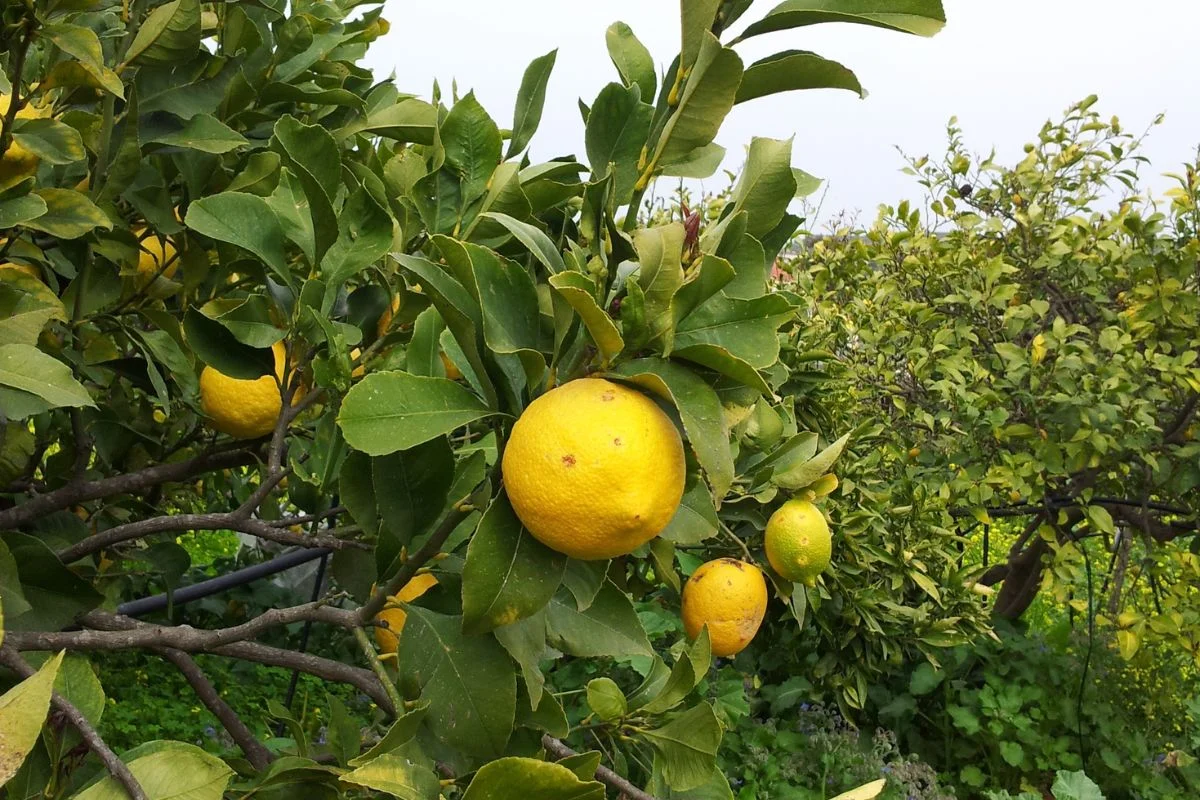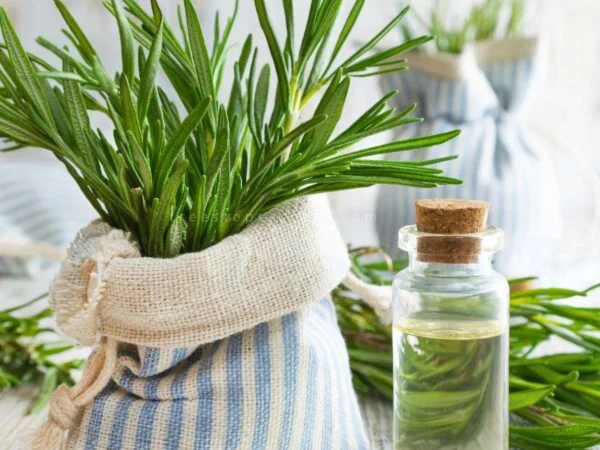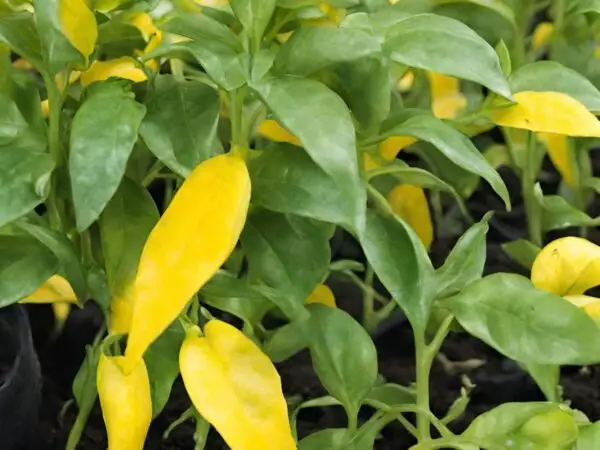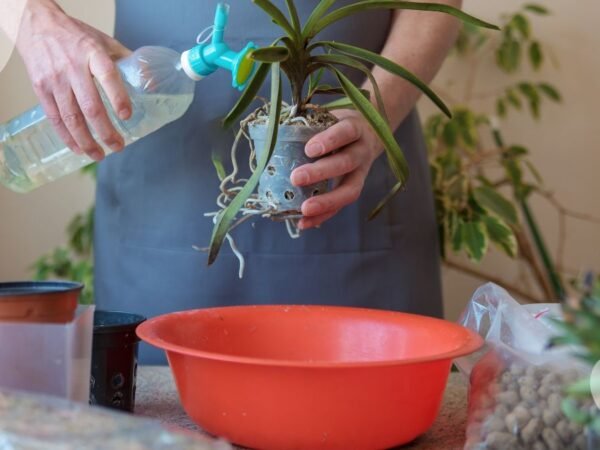
Are you wondering why the leaves on your lemon tree are turning yellow? Don't worry, you're not alone. Many lemon tree owners face this issue and it can be quite perplexing. But fret not, because in this guide, we will delve into the possible causes of yellowing leaves on lemon trees and provide you with effective solutions.
When your lemon tree's leaves start turning yellow, it's often a sign that something is amiss. It could be due to nutrient deficiencies, overwatering, pests, diseases, or even environmental factors. Identifying the root cause is crucial in order to address the problem effectively and ensure the health and vitality of your lemon tree.
In the following sections, we'll explore each potential cause in detail and provide you with practical tips on how to remedy the situation. So if you're ready to revive your lemon tree's lush green foliage and vibrant fruits, let's dive right in!
Winter Yellowing: Do Lemon Tree Leaves Turn Yellow in Winter?
Yes, lemon tree leaves can turn yellow during winter. This phenomenon is quite common and can be attributed to a combination of cold temperatures and reduced sunlight. While it may be concerning to see your lemon tree's vibrant green foliage transform into a pale yellow hue, there are steps you can take to prevent this winter yellowing.
Cold temperatures play a significant role in the yellowing of lemon tree leaves during winter. When exposed to chilly weather, the metabolic processes within the plant slow down, affecting its ability to absorb nutrients efficiently. As a result, the leaves may lose their green pigment and appear yellowish.
Reduced sunlight during the winter season contributes to leaf discoloration. The shorter days and lower intensity of sunlight limit photosynthesis, which is crucial for maintaining healthy green foliage. Without an adequate amount of light, the chlorophyll production decreases, leading to yellowing leaves.
To prevent yellowing of lemon tree leaves during winter and ensure their vitality when spring arrives, it is essential to provide proper care:
- Protect from frost: Shield your lemon tree from freezing temperatures by covering it with a frost cloth or moving it indoors if possible.
- Provide sufficient light: If growing your lemon tree indoors during winter months, place it near a south-facing window where it can receive maximum sunlight.
- Maintain optimal temperature: Keep the indoor temperature around 65-70°F (18-21°C) as extreme fluctuations can stress the plant.
- Water adequately: Adjust watering frequency according to seasonal changes; reduce watering during colder months while ensuring that the soil does not completely dry out.
Causes of Yellowing Leaves on Meyer Lemon Trees
Several factors can contribute to yellowing leaves on Meyer lemon trees. Nutrient deficiencies, pests, diseases, and environmental conditions are potential culprits. Identifying the specific cause is essential for appropriate action.
Nutrient Deficiencies
One common reason for yellowing leaves is nutrient deficiencies. Lemons require a balanced supply of nutrients to thrive, and any deficiency can manifest as discoloration in the leaves. The most common nutrient deficiencies in lemon trees include:
- Nitrogen deficiency: Lack of nitrogen leads to pale yellow leaves with green veins.
- Iron deficiency: Insufficient iron causes yellowing between leaf veins while leaving veins green.
- Magnesium deficiency: A lack of magnesium results in yellowing between leaf veins but with green veins remaining intact.
To address nutrient deficiencies, you can apply fertilizers specifically formulated for citrus trees. These fertilizers contain the necessary nutrients in the right proportions to promote healthy growth.
Pests
Pests can also be responsible for the yellowing of lemon tree leaves. Common pests that affect Meyer lemon trees include aphids, mites, and scale insects. These tiny invaders feed on the sap within the leaves, causing them to turn yellow and eventually drop off.
To combat pests effectively, consider using organic insecticides or natural predators such as ladybugs that feed on aphids. Regularly inspect your lemon tree for signs of infestation and take immediate action if you spot any pests.
Diseases
Various diseases can plague Meyer lemon trees and lead to leaf discoloration. Citrus greening disease is a particularly devastating condition caused by bacteria transmitted through infected insects.
Addressing Nitrogen Deficiency for Yellow Lemon Tree Leaves
Yellow leaves on lemon trees can be a cause for concern, as they indicate a potential problem with the tree's health. One common culprit behind this issue is nitrogen deficiency. Nitrogen is an essential nutrient that plays a crucial role in the growth and development of plants. When lemon trees lack sufficient nitrogen, their leaves turn yellow, affecting their overall vitality.
Nitrogen Deficiency: A Common Cause of Yellow Leaves
Nitrogen deficiency occurs when there is an inadequate supply of nitrogen available to the lemon tree. This nutrient is vital for various plant functions, including chlorophyll production, which gives leaves their green color. Without enough nitrogen, the leaves gradually lose their vibrant hue and become yellow.
Applying Nitrogen-Rich Fertilizers to Alleviate the Issue
One way to rectify nitrogen deficiency in lemon trees is by applying fertilizers rich in this essential nutrient. There are several types of nitrogen-rich fertilizers available on the market that can help restore balance to your tree's nutrient levels. Some popular options include:
- Urea: Urea-based fertilizers contain high concentrations of nitrogen and are readily absorbed by plants.
- Ammonium Sulfate: This fertilizer provides both sulfur and nitrogen, effectively addressing deficiencies in both nutrients.
- Blood Meal: Blood meal is an organic fertilizer derived from dried animal blood and contains a significant amount of nitrogen.
When applying these fertilizers, it's important to follow the instructions provided by the manufacturer carefully.
Tackling Manganese and Zinc Deficiencies Causing Yellow Leaves
Lemon trees are known for their vibrant green foliage, so it can be concerning when you notice the leaves turning yellow. One common reason for this change is a deficiency in manganese and zinc, two essential micronutrients that play a crucial role in the tree's overall health.
Identifying the Culprits: Manganese and Zinc Deficiencies
Yellowing leaves, also known as chlorosis, are often an indication of nutrient deficiencies in lemon trees. Manganese and zinc are particularly important for maintaining healthy leaf coloration. When these micronutrients are lacking, lemon tree leaves tend to lose their deep green hue and instead develop a pale yellow or even white appearance.
Corrective Measures: Applying Foliar Sprays or Soil Amendments
To address manganese and zinc deficiencies causing yellow leaves on your lemon tree, it is vital to provide the necessary nutrients. There are several ways to do this effectively:
- Foliar sprays: Applying foliar sprays containing manganese and zinc directly to the leaves can quickly correct deficiencies. These sprays allow the tree to absorb the nutrients through its foliage, bypassing any potential soil-related issues.
- Soil amendments: Another approach involves amending the soil with manganese- and zinc-rich products. Incorporating organic matter such as worm castings into the soil helps improve nutrient availability over time.
Promoting Vibrant Foliage: Maintaining Optimal Nutrient Levels
While addressing specific deficiencies is crucial, maintaining overall nutrient balance is equally important for promoting vibrant foliage on lemon trees.
Essential Tips for Healthy Lemon Trees: Citrus Care 101
Proper watering, adequate sunlight, and well-draining soil are vital for healthy lemon trees. Regular pruning helps improve air circulation and reduces disease risk. Monitoring pests, providing sufficient nutrients, and maintaining pH balance support overall tree health.
Following a proper care plan is crucial. By understanding the specific needs of these trees, you can ensure they thrive in your garden or yard.
Watering Your Lemon Tree
Proper watering is essential for the health of your lemon tree. These citrus trees require consistent moisture without being waterlogged. A good rule of thumb is to water them deeply but infrequently. This encourages deep root growth and prevents shallow rooting.
To water your lemon tree effectively:
- Water the tree thoroughly until the soil is moist about 6-8 inches deep.
- Allow the top inch of soil to dry before watering again.
- Adjust watering frequency based on weather conditions; more during hot and dry periods, less during cooler months.
Sunlight Requirements
Adequate sunlight is another key factor in maintaining healthy lemon trees. These citrus plants need at least 6-8 hours of direct sunlight each day to thrive. Ensure you plant them in a location that receives ample sunshine throughout the day.
If you're growing lemons indoors, place them near a south-facing window that provides maximum exposure to sunlight.
Soil Drainage
Well-draining soil is crucial for preventing root rot and other diseases in lemon trees. Avoid planting them in heavy clay soils that retain excess moisture.
Dealing with Zinc Deficiency Leading to Yellow Leaves
Zinc deficiency is a common issue that can cause the leaves of lemon trees to turn yellow. This nutrient deficiency affects the tree's ability to produce chlorophyll, which is essential for photosynthesis. Without sufficient chlorophyll, the leaves lose their green color and become yellow.
To address this problem, it is crucial to provide the lemon tree with an adequate supply of zinc. There are a few effective methods for correcting zinc deficiency in lemon trees:
Applying Zinc Sulfate or Chelated Zinc Treatments
One way to combat zinc deficiency is by applying zinc sulfate or chelated zinc treatments directly to the soil around the tree's roots. These treatments provide a readily available source of zinc that can be absorbed by the roots and transported throughout the tree.
When using zinc sulfate, it is important to follow the recommended dosage instructions provided by manufacturers. Typically, 1-2 tablespoons of zinc sulfate per gallon of water should be applied every three months during the growing season. Chelated zinc treatments are also effective and can be applied according to package instructions.
Monitoring Soil pH Levels
Soil pH plays a significant role in nutrient availability for plants, including zinc. When soil pH levels are too high or too low, it can hinder the absorption of essential nutrients like zinc. Therefore, regularly monitoring and adjusting soil pH levels is crucial for preventing nutrient deficiencies.
Ideally, lemon trees thrive in slightly acidic soil with a pH range between 5.5 and 6.5. If your soil pH falls outside this range, you may need to make adjustments by adding amendments such as sulfur or lime accordingly.
Overwatering Effects: Yellowing Leaves on Lemon Trees
Overwatering can have detrimental effects on lemon trees, causing their leaves to turn yellow. This common issue occurs when the tree is receiving too much water, leading to root rot and hampering nutrient absorption. To ensure the health of your lemon tree, it is crucial to adjust watering practices and improve drainage.
When lemon trees are overwatered, excess moisture accumulates around the roots, creating a breeding ground for root rot. This fungal disease attacks the roots, preventing them from absorbing essential nutrients effectively. As a result, the leaves start to exhibit signs of distress by turning yellow.
To rectify this problem and restore your lemon tree's vitality, you must address both the frequency and amount of watering. Here are some steps to take:
- Evaluate your watering routine: Take a moment to assess how often you water your lemon tree. If you find yourself watering it frequently or providing excessive amounts of water each time, it's likely contributing to overwatering.
- Check soil moisture: Before watering your lemon tree again, check the moisture level of the soil using a moisture meter or simply by inserting your finger into the ground up to two inches deep. If it feels damp or wet, hold off on watering until it dries out slightly.
- Establish good watering practices: Instead of adhering to a strict schedule for watering your lemon tree, adopt a more flexible approach that considers its specific needs. Only water when necessary and allow the topsoil to dry out between waterings.
- Improve drainage:
Investigating Yellowing and Blackening of Meyer Lemon Leaves
Yellowing and blackening of Meyer lemon leaves can be a cause for concern among citrus enthusiasts. These symptoms may indicate a fungal or bacterial infection that requires prompt attention. Understanding the causes and implementing appropriate measures can help restore the health of your lemon tree.
Fungal or Bacterial Infection
When you notice yellowing and blackening of the leaves on your Meyer lemon tree, it is crucial to investigate whether a fungal or bacterial infection is the culprit. Fungi like Phytophthora parasitica and bacteria such as Xanthomonas citri subsp. citri are common pathogens that can attack citrus trees, causing leaf discoloration.
Fungal infections often manifest as yellow spots on the leaves, which gradually darken and develop into black lesions. On the other hand, bacterial infections may lead to small, water-soaked areas that eventually turn brown or black.
Controlling the Issue
To address yellowing and blackening of Meyer lemon leaves caused by fungal or bacterial infections, several control measures can be employed:
- Sanitation: Start by removing any fallen leaves from around the tree as they may harbor infectious spores or bacteria.
- Pruning infected parts: Trim away any affected branches or leaves using sterilized pruning tools. Dispose of these clippings properly to prevent further spread of infection.
- Applying appropriate fungicides: Consult with a local horticulturist or garden center to identify suitable fungicides for treating citrus diseases. Follow their instructions carefully when applying these products to ensure effective control.
- Preventive measures
Effective Solutions for Treating Yellow Leaves on Lemon Trees
Treating yellow leaves on lemon trees is essential for maintaining their health and productivity. However, before implementing any solution, it is crucial to identify the underlying cause of the yellowing foliage. Addressing nutrient deficiencies, pests, diseases, or environmental factors accordingly will help restore the vibrant green color to your lemon tree's leaves. Regular monitoring and prompt action are key to ensuring healthy foliage.
Identifying the Underlying Cause
Yellow leaves can be a result of various factors affecting the overall health of your lemon tree. By closely examining the affected leaves and considering other symptoms, you can determine the root cause:
- Nutrient Deficiencies: Lack of essential nutrients like nitrogen, iron, or magnesium can lead to yellowing leaves. Conduct a soil test to identify any deficiencies and adjust your fertilization routine accordingly.
- Pests: Insects such as aphids or mites can infest lemon trees and cause leaf discoloration. Applying neem oil or insecticidal soap can effectively control these pests without harming beneficial insects.
- Diseases: Fungal infections like citrus greening disease or bacterial infections like citrus canker can cause yellowing leaves in lemon trees. Prune affected branches and apply appropriate fungicides or bactericides as recommended by local agricultural extension services.
- Environmental Factors: Extreme temperatures, excessive sunlight exposure, overwatering, or poor drainage can stress lemon trees and result in yellow leaves. Ensure your tree receives adequate water without being waterlogged and provide shade during scorching summer days.
Aphid Infestation: Yellow Leaves Caused by Aphids
Aphid infestations often result in yellow leaves on lemon trees. These tiny insects, commonly found in gardens and orchards, can cause significant damage to plants if left unchecked. The presence of aphids on your lemon tree can be identified by the yellowing of leaves and the sticky residue they leave behind.
To control aphids effectively, it is recommended to apply insecticidal soaps or neem oil. These natural remedies are safe for the plant while being lethal to aphids. Insecticidal soaps work by suffocating the insects, while neem oil disrupts their feeding and reproductive processes. Regularly spraying affected foliage with these solutions helps eliminate aphids and prevent further damage.
In addition to using insecticidal soaps or neem oil, encouraging natural predators like ladybugs can aid in long-term management of aphid infestations. Ladybugs are voracious eaters of aphids and can significantly reduce their population. You can attract ladybugs to your garden by planting flowers such as marigolds, daisies, and fennel that provide nectar and pollen for them.
Yellow leaves on a lemon tree indicate a disruption in chlorophyll production caused by aphid feeding. Aphids pierce the leaves with their mouthparts to extract sap from the plant's vascular system. This sap contains essential nutrients, including chlorophyll necessary for photosynthesis. When aphids feed excessively on the leaves, they deprive them of chlorophyll, resulting in yellowing foliage.
Another common pest that may cause yellowing leaves is spider mites.
Browning Blues: Leaf Turning Brown on Lemon Trees
If you've noticed that the leaves on your lemon tree are turning yellow, it's important to understand the potential causes behind this phenomenon. Several factors can contribute to browning and yellowing of lemon tree leaves, including sunburn, drought stress, and disease. Let's delve into each of these issues and explore ways to address them effectively.
Sunburn: Providing Shade During Hot Periods
One common reason for leaf browning on lemon trees is sunburn. Just like us, plants can get sunburned too! When exposed to intense sunlight for prolonged periods, the leaves may develop brown spots or turn completely yellow. To prevent this damage, it's crucial to provide shade during hot periods.
- Consider moving potted lemon trees away from direct sunlight.
- Install shade cloth or use umbrellas to shield outdoor lemon trees.
- If your lemon tree is indoors near a sunny window, consider moving it to a spot with filtered light.
Drought Stress: Adequate Irrigation Is Key
Another culprit behind yellowing leaves on lemon trees is drought stress. Insufficient water supply can cause the foliage to dry out and turn brown. Proper irrigation practices are vital for maintaining leaf health.
- Water your lemon tree deeply and regularly.
- Ensure the soil remains consistently moist but not waterlogged.
- Mulching around the base of the tree helps retain moisture.
Disease Prevention Measures Promote Leaf Health
Diseases can also lead to leaf discoloration in lemon trees. Fungal infections such as citrus greening or bacterial diseases like citrus canker can cause leaves to turn yellow or develop brown patches.
Combating Manganese Deficiency for Yellow Lemon Tree Leaves
Lemon trees are a vibrant addition to any garden, with their luscious green leaves and fragrant fruits. However, it can be disheartening to see the leaves of your lemon tree turning yellow. One common culprit behind this issue is manganese deficiency.
The Role of Manganese in Leaf Health
Manganese is an essential micronutrient that plays a crucial role in various physiological processes within plants, including photosynthesis and enzyme activation. When lemon trees lack sufficient manganese, they often exhibit symptoms such as yellowing leaves, stunted growth, and reduced fruit production.
Applying Manganese Sulfate or Foliar Sprays
One effective method to rectify manganese deficiency is by applying manganese sulfate directly to the soil around the lemon tree. This compound provides a readily available source of manganese for the roots to absorb. It is important to follow the recommended dosage instructions provided on the product packaging.
Alternatively, foliar sprays containing manganese can also be used to address the deficiency. These sprays are applied directly to the leaves, allowing for quick absorption by the plant. Regular applications over several weeks can help restore healthy levels of manganese and alleviate yellowing leaf symptoms.
Enhancing Manganese Availability through Soil pH Adjustment
Maintaining proper soil pH levels is crucial for maximizing nutrient availability to plants, including manganese. Lemon trees prefer slightly acidic soil with a pH range between 5.5 and 6.5.
Iron Insufficiency and Yellow Leaves on Lemon Trees
Iron insufficiency is a common cause of yellow leaves in lemon trees. When the leaves of your lemon tree turn yellow, it can be a sign that the tree is not getting enough iron to support its growth and development. This deficiency can occur due to various factors such as poor soil conditions, excessive sunlight exposure, or stress.
To address this issue, there are several corrective measures you can take. One effective solution involves applying iron chelates or iron sulfate directly to the soil around the base of the tree. These products provide a readily available source of iron that can be easily absorbed by the roots. By replenishing the iron levels in the soil, you can help restore the green color to your lemon tree's leaves.
In addition to applying iron supplements, regularly monitoring and adjusting soil pH levels is essential for preventing and treating iron deficiency in lemon trees. Acidic soils with a pH level below 6 can hinder nutrient absorption, including iron. Conducting a soil test will enable you to determine if your soil's pH needs adjustment.
If your soil is too alkaline, adding sulfur or other acidifying agents can help lower the pH level and improve nutrient availability. On the other hand, if your soil is too acidic, incorporating lime or dolomite lime into the soil can raise the pH level towards neutrality.
Furthermore, it's important to consider external factors that may contribute to stress in your lemon tree and exacerbate iron insufficiency. Excessive sunlight exposure without adequate shade protection can lead to leaf scorching and increased water loss through transpiration, making it harder for the tree to absorb necessary nutrients like iron.
Troubleshooting Yellow Spots in Indoor Potted Lemon Trees
Yellow spots on indoor potted lemon trees can be quite concerning for any plant lover. These unsightly blemishes not only affect the tree's appearance but may also indicate underlying issues that need to be addressed promptly.
Nutrient Deficiencies: A Common Culprit
One of the primary reasons why yellow spots appear on indoor potted lemon trees is nutrient deficiencies. When essential nutrients are lacking, the leaves begin to exhibit signs of distress. To prevent this from happening, it is crucial to provide balanced fertilization to your lemon tree.
Aim for a fertilizer specifically formulated for citrus plants and follow the recommended dosage instructions. This will ensure that your tree receives adequate amounts of nitrogen, phosphorus, and potassium – the key nutrients necessary for healthy foliage growth. Consider using a slow-release fertilizer to provide a steady supply of nutrients over an extended period.
Proper Drainage: Essential for Leaf Health
Another factor that contributes to yellow spots on potted lemon trees is improper drainage. When excess water accumulates in the pot, it can lead to root rot and hinder nutrient uptake by the plant. To avoid this issue, ensure that your pot has drainage holes at the bottom.
When watering your lemon tree, allow the soil to dry out slightly between waterings. Stick your finger about an inch into the soil; if it feels dry at this depth, it's time to water again. Remember not to overwater as this can suffocate the roots and cause further damage.
Preventing and Managing Lemon Tree Yellow Leaves
Congratulations! You have now gained a comprehensive understanding of why the leaves on your lemon tree may be turning yellow. Armed with this knowledge, you are well-equipped to take action and ensure the health and vitality of your citrus companion. Remember, prevention is key in maintaining vibrant green foliage.
To keep those yellow leaves at bay, make sure you provide proper care for your lemon tree. This includes addressing nutrient deficiencies, such as nitrogen, manganese, zinc, and iron, which can contribute to yellowing leaves. Be mindful of overwatering as it can lead to root rot and leaf discoloration. Regularly inspect your lemon tree for signs of pests like aphids and promptly treat any infestations that may arise.
Now that you're armed with these tips and tricks to combat yellow leaves on your lemon tree, go out there and give your citrus buddy the TLC it deserves. With a little effort and attention to detail, you'll soon be rewarded with a lush green canopy bursting with juicy lemons!
FAQs
How often should I water my lemon tree?
Watering frequency depends on various factors such as climate, soil type, and pot size. As a general rule of thumb, water deeply but infrequently. Allow the top inch or two of soil to dry out before watering again.
Can I use any fertilizer for my lemon tree?
It's best to use a balanced citrus-specific fertilizer containing essential nutrients like nitrogen (N), phosphorus (P), potassium (K), as well as micronutrients such as iron (Fe) and zinc (Zn). Follow the instructions on the fertilizer packaging for application rates.
Should I prune my lemon tree?
Pruning helps promote airflow and sunlight penetration while removing dead or diseased branches. It's recommended to prune during late winter or early spring before new growth begins.
How do I protect my lemon tree from pests?
Regularly inspect your lemon tree for signs of pests like aphids, scale insects, or citrus leaf miners. Use organic pest control methods or consult a professional if the infestation becomes severe.
Can I grow a lemon tree indoors?
Yes, you can grow a lemon tree indoors as long as it receives sufficient sunlight (at least 8 hours per day) and proper care. Choose a dwarf variety suitable for container gardening and provide well-draining soil and regular fertilization.
Image Source: Paid image from CANVA





